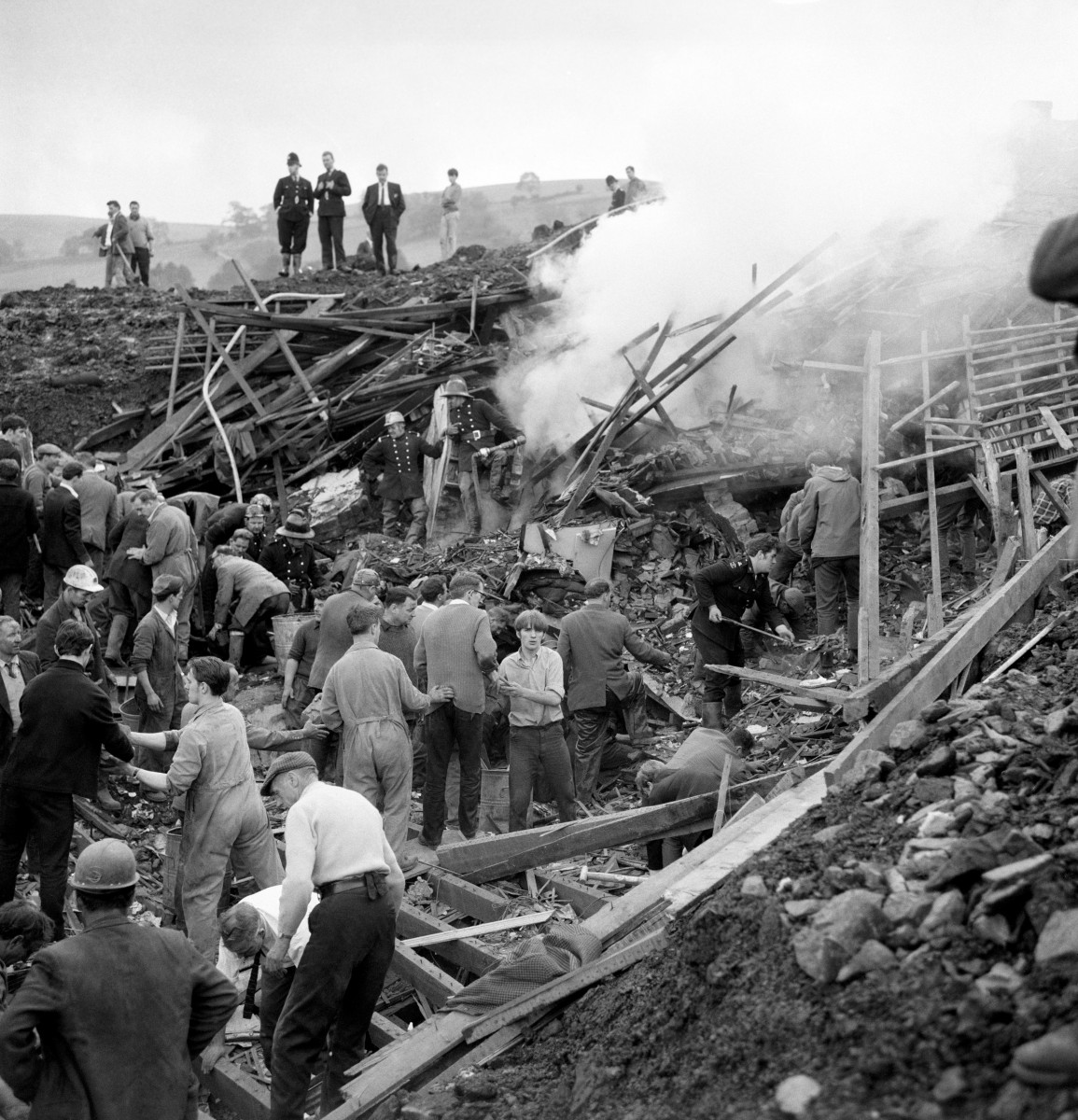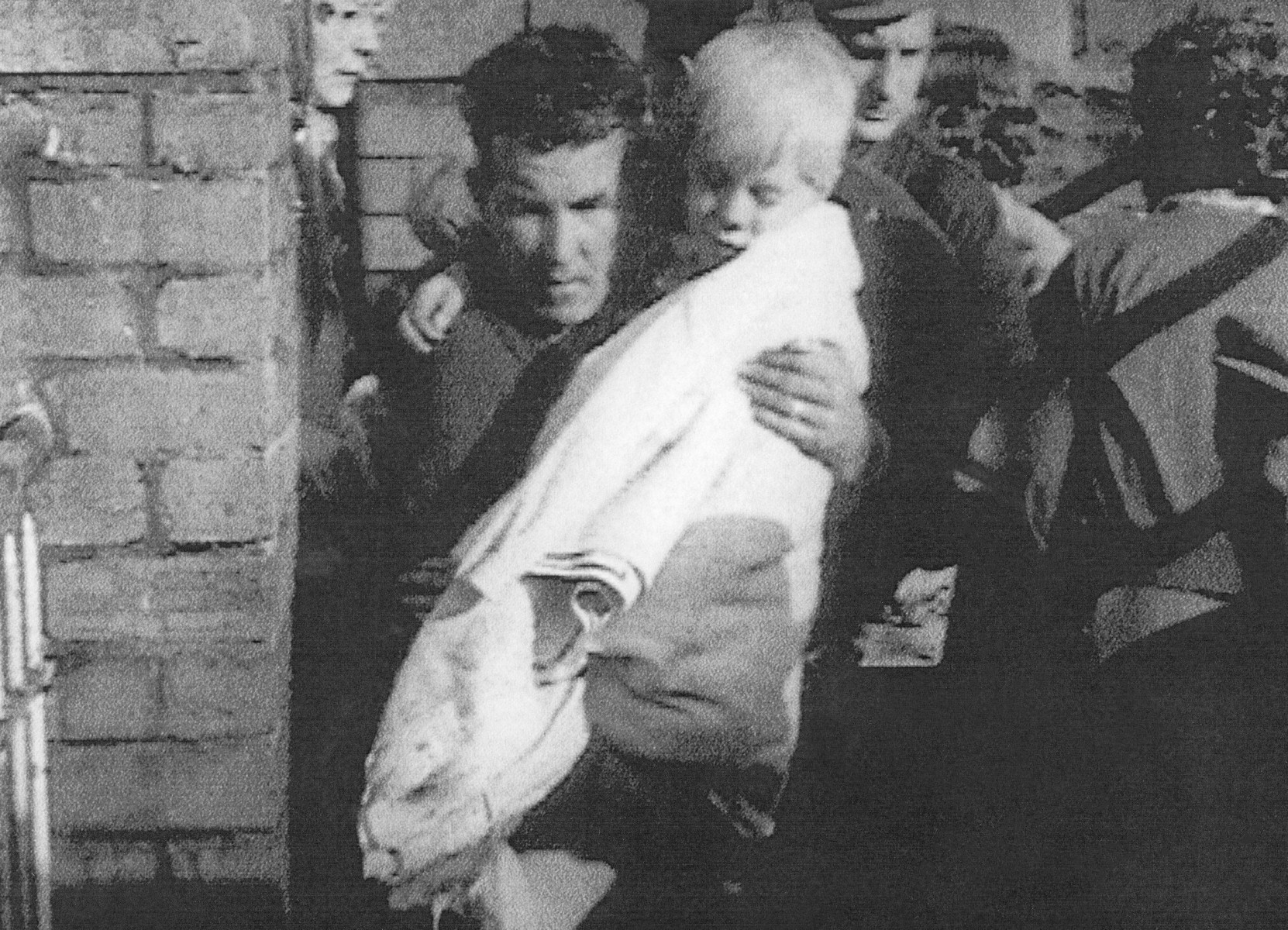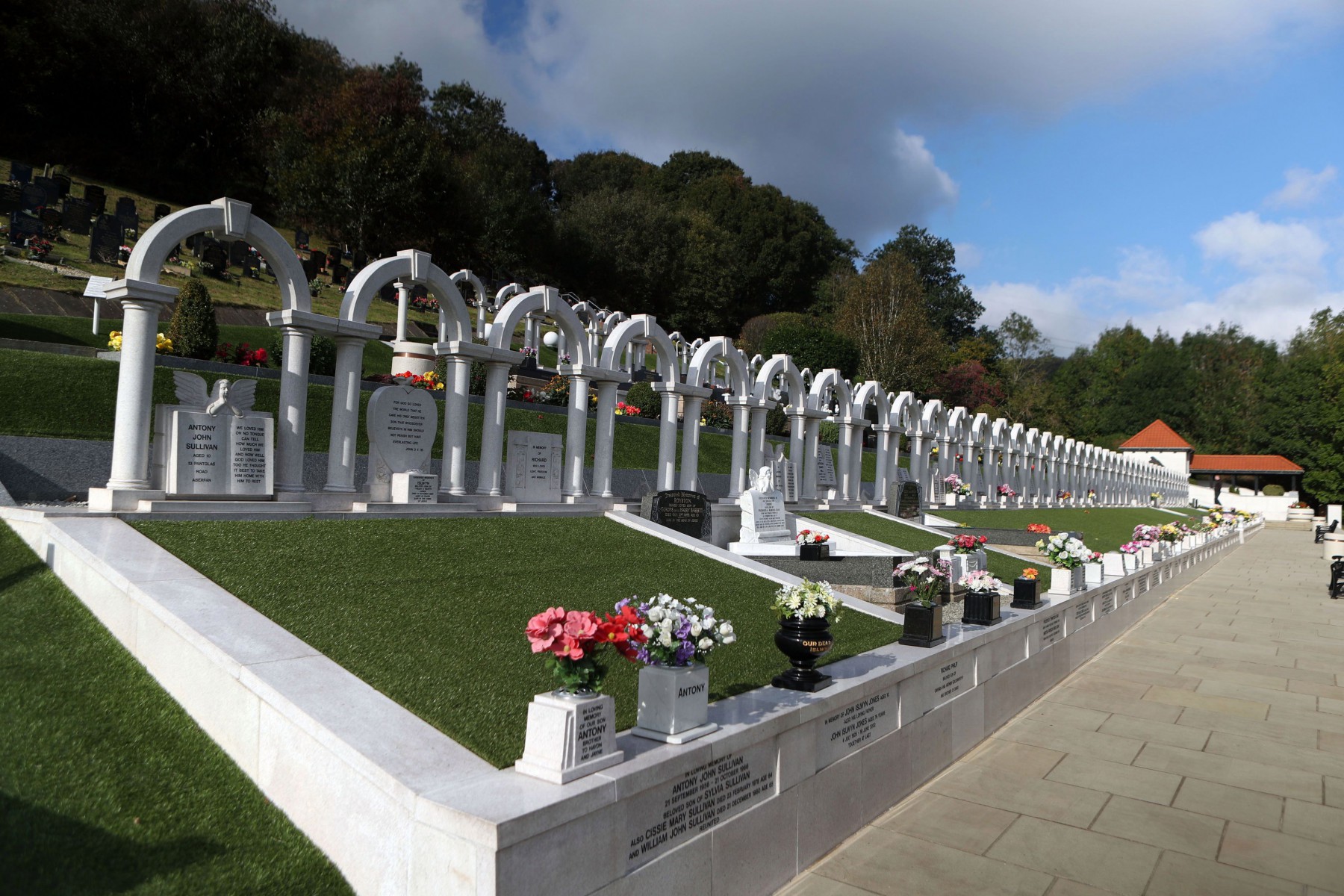ABERFAN was one of the worst tragedies in British history.
But what exactly happened and how many lost their lives? Here’s all you need to know…
When was the Aberfan tragedy and how many died?
Aberfan, the name of the village, is now synonymous with tragedy after 116 children and 28 adults lost their lives as they were crushed or drowned in coal slurry.
At 9.15am on October 21, 1966, a disaster struck a small Welsh mining community which would devastate the village for a generation.
More than 150,000 tonnes of thick black coal, shale and water engulfed the village, wiping out most of the pupils at Pantglas Junior School.
The incident was a national tragedy which prompted visits from the Queen and the Prime Minister along with donations from around the world.

How did Aberfan happen?
The disaster unfolded after millions of cubic metres of excavated mining debris from the Merthyr Vale Colliery came thundering down the hillside.
The waste material had been piled high on the side of Mynydd Merthyr – above the village of Aberfan – for years even though there were numerous underground springs below.
At 9.15am on a foggy October 21, 20ft of material from Tip Number Seven became dislodged with devastating consequences.
Like many of the survivors, Sunday’s 52nd anniversary will bring back painful memories of the disaster.
Jeff Edwards, who was the last child to be brought out of Pantglas Primary School alive, said he has been plagued by nightmares over the years.
The future Merthyr mayor, Mr Edwards had just picked a new library book and walked back to his desk when he heard a gigantic rumbling sound.
He added: “The teacher said. ‘It’s only thunder, it will go soon’, then the next thing I remember was waking up and hearing shouts and screams.”
For two hours the eight-year-old was pinned next to a dead girl from his class, with her head next to his face.
“‘I still see her sometimes,” he said, speaking of his nightmares.
“I can’t stop it all coming back.
“I still have nightmares and sometimes suffer from deep bouts of depression.”

What was the aftermath of Aberfan?
The horrendous aftermath was all the more painful to deal with given that there had been previous concerns from villagers.
A year before the tragedy unfolded, two mothers had presented a petition to Pantglas headmistress Ann Jennings about flooding – which she then passed on to the local council.
And in 1964, a local councillor – Gwyneth Williams – had said that if tip were to move suddenly it could threaten the whole school.
However, the warnings were ignored – and the fight for justice afterwards left many in the village feeling even more angry.
Despite an in-depth tribunal, which cited the disaster had been caused by a “bungling ineptitude” by the Coal Board, no one was ever punished.
To add insult to injury, a protracted row over the cost of removing Tip Number Seven saw scared villagers, keen for the tragedy not to happen again, left little choice but to pay out 150,000 from a disaster fund.
The money was eventually repaid in 1997 – and the Welsh government went one step further 10 years on by donating 1.5 million to the Aberfan Memorial Charity.
But while time has healed some, but not all of the scars, the events of that day have not been forgotten in Wales.
On Sunday, the Welsh Assembly will fly its flags at half mast as a mark of respect to those left devastated by the disaster.
And at 9.15am people will observe a minute’s silence.
First Minister Carwyn Jones said: “The disaster in Aberfan was one of the darkest days in modern Welsh history and we remember the adults and school children who lost their lives.
“We also think about the survivors, those who lost loved ones and the people who answered the call to search and care for survivors, and recover those who had perished.
“Individuals, families and the community have been profoundly affected by the disaster.
“Half a century after, it is fitting that the country as a whole comes together, with respect and compassion, to remember.”

Why did the Queen delay going to Aberfan?
While the Queen was made aware of the tragedy shortly after it happened, due to royal protocol she waited eight days to visit the Welsh community – adelay, which she is said to regret immensely.
“Aberfan affected the Queen very deeply, I think, when she went there. It was one of the few occasions in which she shed tears in public,” Sir William Heseltine, who served in the royal press office at the time, revealed in the documentaryElizabeth: Our Queen.
“I think she felt in hindsight that she might have gone there a little earlier. It was a sort of lesson for us that you need to show sympathy and to be there on the spot, which I think people craved from her.”
What was the timeline for Aberfan?
1963
July 24: DCW Jones, a waterworks engineer, sends a letter to a colleague expressing concern about the danger of the coal slurry being tipped at the rear of Pantglas Junior School.
1964
Local councillor Gwyneth Williams expresses also concern in a letter about the giant coal waste – fearing that “it could threaten the whole school”.
Speaking of the mountain of coal waste, he writes: “The slurry is so fluid and the gradient so steep that it could not possibly stay in position in the winter time or during periods of heavy rain.”
August 20: Mr Jones writes to the National Coal Board also expressing concern about the tip. He writes: “You are no doubt well aware that the tips at Merthyr Vale tower above the Pantglas area and if they were to move a very serious position would accrue.”
1964
October 21:
- 7.30am: Mine workers arrive at work on a foggy morning to find tip number seven had sunk around 3 metres (10 feet) overnight.
- 9am: With no phone lines on the hillside, a coal worker walks down the mountain to tell bosses about the sinking problem. By the time the order to stop adding to the tip is given it has sunk 6 metres (19.5 feet). By now the school bell has rung at Pantglas and 240 pupils go inside in an excited mood on what was their last day before half term.
- 9.15am: The tip gives way and 150,000 tonnes of liquefied slurry slides down the mountain and towards the village of Aberfan. The slurry hits the school and houses on Moy Road with an almighty force.
- 9.25am: First call to the emergency services received. Mines Rescue Service Roy Hamer, who was on duty that day, later says he remembers telling a colleague at the time: “This is going to be something terrible … why do they want us at a school?”
- 9.50am. Fire crews are now on the scene and describe it as “utter pandemonium”. Firefighters, emergency services and miners begin an around the clock battle to dig out those trapped by the debris.
- Between 11am and midday: The last survivor, Jeff Edwards, is pulled out from the rubble. He had been pinned for more than two hours with the head of a dead girl against him. As news of the disaster emerges, miners and residents from neighbouring communities rush to Aberfan to help with the rescue effort, forming a conveyor belt of “bucket brigades” to help move the waste away quicker.
- 11.30am: A burst water main knocked out by the avalanche is finally switched off.
- Mid to late afternoon: Hope of finding more survivors begins to fade with rescuers now only finding dead children. Eyewitnesses later describe seeing the children still sitting at their desks entombed by the slurry.
- Evening: A make-shift mortuary is set up at a local chapel. Families of those missing identify their loved ones. It later emerges that among the dead are school headmistress Mrs Jennings.
- November 29: Tribunal into the Aberfan disaster begins, chaired by respected Welsh barrister Sir Herbert Edmund Davies. The inquiry lasts 76 days and sees 136 witnesses called and more than 300 exhibits examined.
1965
January: A disaster fund to aid the village and bereaved, launched by the mayor of Merthyr, was closed after receiving nearly 90,000 contributions totalling 1.6 million. The fund was worth 1.75 million overall.
1997
July 9: The Queen brought the largest gathering of survivors and bereaved of the Aberfan disaster together since the disaster during her third visit to the Mid-Glamorgan village. She paid her respects just eight days after the disaster and returned to open the yellow-brick community centre in 1973.








